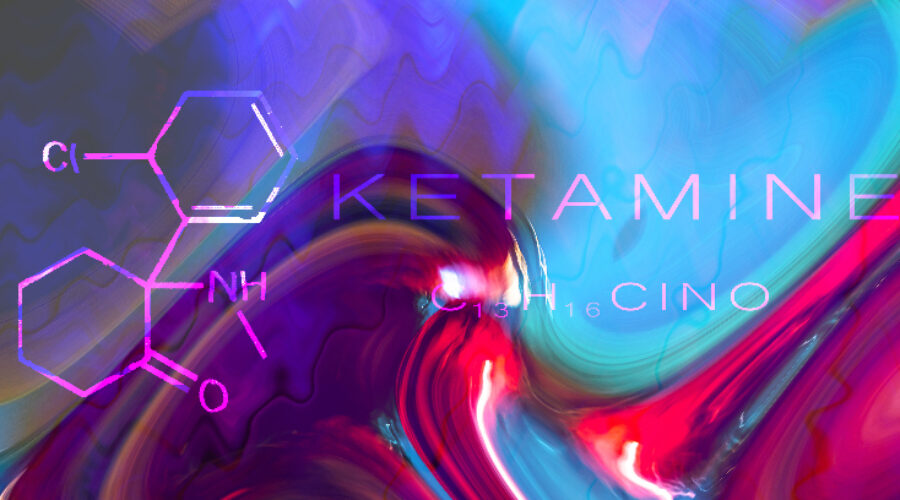Is Ketamine an Opioid? Why One of These Painkillers is Safer Than the Other
What is ketamine? Is it a recreational drug? A painkiller? Yes, and yes. But Is ketamine an opioid? Is ketamine in the same category as fentanyl, heroin, and oxycontin?
Ketamine shares many traits with opioids. But how far do the similarities go? Before we get into the technical differences, I’d like to share my experience administering both.
Ketamine and Opioids: Very Different Respiratory Effects
As an emergency medical technician, I was trained on both opioids and ketamine by the medical establishment here in Denver. One danger of using opioids in medicine is that they slow down the patients’ breathing, leaving it weak and shallow. So when we’d inject a patient with morphine or fentanyl, we’d have to watch them like a hawk, hovering over them to watch the chest rise and fall. Scary stuff. Nothing bad ever happened, but if the medics did give too much morphine or fentanyl, they could actually stop the patients’ breath and kill them.
This depression of the respiratory system is why opioids are associated with tens of thousands of overdose deaths in the real world. Too much fentanyl or morphine, and breathing halts and people die.
One of the real benefits of ketamine is that the patients’ breathing continues just as strongly as ever. The ribcage keeps expanding. It’s very difficult to cause someone’s death using ketamine. That gives paramedics peace of mind.
Ketamine is not completely safe, but because air keeps rushing in and out, ketamine is not connected to overdose deaths in the same way opioids are.
READ NEXT: In Search of Your Purpose? Psychedelics and Plant Medicines Could Help
The Main Differences Between Ketamine and Opioids
| Feature/Property | Ketamine | Opioids |
| Class of Drug | NMDA receptor antagonist | Opiate receptor agonists |
| Primary Uses | Anesthetic, analgesic, treatment-resistant depression | Analgesic, cough suppressant, management of opioid dependence |
| Mechanism of Action | Blocks NMDA receptors, which play a role in pain and cognition | Primarily activate mu-opioid receptors, leading to decreased perception of pain |
| Psychoactive Effects | Dissociative, hallucinogenic effects | Euphoria, sedation |
| Respiratory Effects | Generally maintains respiratory drive but can increase airway tone | Respiratory depression (can be life-threatening at high doses) |
| Dependence Potential | Lower potential compared to opioids, but still possible | Significant potential for physical and psychological dependence |
| Overdose Risk | Relatively high therapeutic index (wide safety margin) | Narrow therapeutic index with risk of fatal respiratory depression |
| Recreational Use | Known as “Special K” or “ket” when abused recreationally | Used recreationally and is associated with a significant opioid epidemic worldwide |
| Chronic Side Effects | Lower urinary tract symptoms, cognitive effects with chronic abuse | Constipation, tolerance, hyperalgesia, hormonal imbalance, addiction |
| Reversal Agents | None specific | Naloxone (Narcan) can reverse opioid overdose |
Both Ketamine and Opioids Are Used to Kill Pain
Ketamine and opioids have many of the same effects. I used to work in the back of an ambulance, taking sick and injured people to the emergency department. I saw blood and guts — dislocated knees, broken bones, and people doubled over with stomach pain. Folks wailed and writhed in agony. It was hard to watch.
At the disposal of the paramedics in my company were three major painkillers: morphine, fentanyl, and ketamine. All three are magic bullets when it comes to ending physical suffering. This may be surprising, but ketamine quashes the hurt just like morphine and fentanyl. Within minutes, on any of those drugs, the pain has disappeared. The patients stopped moaning and we could speed to the hospital.
So you might think ketamine was an opioid, just like fentanyl and morphine. But for us medical professionals, there was one key difference between ketamine and fentanyl/morphine: the effects they had on the patient’s breathing.
READ NEXT: New To Ketamine Treatment? Here’s A Glossary of Ketamine Therapy Terms
Scientific Research and Evidence
The current understanding of ketamine’s pharmacology and its comparison with opioids is significantly informed by scientific research. Studies have shown that ketamine, primarily known as an NMDA receptor antagonist, exhibits a complex mechanism of action. This includes its impact on glutamate signaling, which plays a crucial role in synaptic plasticity and neurogenesis.
Research published in the American Journal of Psychiatry suggests that ketamine’s rapid antidepressant effects are linked to the increased production of brain-derived neurotrophic factor (BDNF), a protein that supports the growth and differentiation of neurons. This mechanism is distinct from opioids, which primarily work by binding to opioid receptors, leading to pain relief but not directly contributing to neurogenesis.
In contrast to opioids, which can induce tolerance and physical dependence, ketamine has been shown to have a lower potential for addiction.
However, its dissociative and hallucinogenic effects, which vary significantly from the euphoria typically associated with opioids, can still lead to misuse. Studies in the Journal of Psychopharmacology have highlighted the potential of ketamine in treating addiction, suggesting that its unique effects on the brain could disrupt addictive behaviors and thought patterns.
Moreover, ketamine’s safety profile, particularly in terms of respiratory effects, has been a subject of extensive research. While opioids can cause significant respiratory depression, leading to fatal overdoses, ketamine generally preserves respiratory function.
This aspect is crucial in emergency medicine, as highlighted in studies focusing on its use in pre-hospital and trauma settings. Overall, the scientific literature indicates that while ketamine and opioids both have analgesic properties, their pharmacological profiles, impact on the brain, and side effects differ markedly.
This distinction is important not only in understanding their therapeutic applications but also in considering their potential risks, especially in the context of the ongoing opioid crisis. The growing body of research underscores ketamine’s potential as a unique tool in pain manageme
The Answer: Ketamine is Not an Opioid, It’s Much More Exotic
So while ketamine and opioids share many similarities, ketamine is not an opioid. It is, among other things, much more fantastical. Opioids calm, warm, and dim your surroundings. Ketamine, at low to medium doses, puts the user in a wavy, dark, colorful world of shapes and images.
I’ll never forget when my ambulance company in Boulder, Colorado, trained us on ketamine. The lecture was like so many others we’d taken on different medicines. We were taught about milligrams per kilogram and mechanism of action. But at the end of the lecture, the teacher told us to be watchful. Some patients coming down off ketamine see bizarre things, and may need reassurance. And to illustrate it, the captain showed us a kind of surrealist Magritte painting, with a floating headless man in a weird rainy landscape. I’d never seen anything like that in my medical training. The lesson was: if your patents start talking about the wild landscape they’re in, don’t worry. It’s normal. And then the captain dismissed us, and the medics seemed to shrug off the oddness, and headed out to the ambulances, armed with a different kind of painkiller.
READ NEXT: Mommy-Dosing: Why Are So Many Moms Microdosing Psychedelics?
Opioids on the Street
On the ambulance, we were faced with lots of opioid overdoses. We’d often get called to people who had used too much fentanyl or heroin and were blue and barely breathing. We’d reverse their overdose using a medicine called naloxone.
The same situation never happened with ketamine. Not once were we called to help with a ketamine overdose. Such a thing does happen; but it’s rare.

The Differences Between Opioids and Ketamine as Painkillers
Ketamine is a “dissociative anesthetic,” not an opioid. The two drug classes act on different parts of the brain and body–different receptors.
Opioids trigger the release of endorphins, the brain’s feel-good neurotransmitters, blocking pain messages and bringing you a sense of well-being.
Ketamine, on the other hand, works on the NMDA receptors. At high doses, ketamine disassociates you from your body, and you feel 1,000 miles away from your pain.
RELATED: Why is Ketamine Called a Dissociative Anesthetic?
Effects on the Body and Brain
Another difference is the way they act on the brain. Ketamine is thought to have neuroregenerative processes. It releases something called brain-derived neurotrophic factor, a molecule proven to regrow nerves.
Opioids don’t seem to regrow brain cells.
Ketamine, again, is not totally benign. When you use a lot of it for a long time, ketamine can damage the body, especially the bladder. And ketamine can induce brain fog and memory trouble if you use it all the time.
The Differences Between Opioids and Ketamine in Terms of Addiction
Both ketamine and opioids can be addictive. They both feel good (although in different ways). That pleasurable feeling leads people to want to use them both all the time.
But the level of risk for addiction is not the same, and the potential downsides are not equal, either.
Opioids can cause physical dependence very quickly. Ketamine, less so.
Ketamine is being explored as a treatment for addiction. Opioids aren’t.
On a Drug Test
Ketamine does not show up on a standard drug test used in workplaces, the military and the criminal justice system. Opioids do.
RELATED: Does Ketamine Show Up On A Drug Test?
As an Antidepressant
Opioids are generally not used as antidepressants. Ketamine is. Although it’s not approved by the FDA as an antidepressant, ketamine is showing promise to stop suicidal ideation and acute feelings of depression.
RELATED: What are the Odds on Psychedelics Helping Gambling Addiction?

In a Psychotherapeutic Setting
Another key difference between the drugs is that opioids are very rarely used in therapeutic settings. It’s extremely uncommon for a therapist or tripsitter to give clients opioids to address their mental health troubles.
Ketamine, on the other hand, is growing more common as an adjunct to psychotherapy.
One reason why ketamine is used in therapeutic settings and opioids are not is because of the way they feel from the inside.
I was trained in ketamine-assisted psychotherapy by the Psychedelic Research and Training Institute in Fort Collins, Colo. On a low dose of ketamine, we were taught, ketamine takes patients away from their body and normal thought processes, and patients can look at problems with more perspective. Worries feel farther away.
So if you can’t stop thinking I’m no good or I want to kill myself, then the ketamine can let you take a step back from those worries and see they are not as pressing as you thought.
Opioids don’t have the same effect. People feel warm, sleepy, and comfortable on opioids. Patients can have an escape from their troubles on opioids. But people using opioids tend not to find a new perspective or a new outlook in the same way people can with ketamine.



